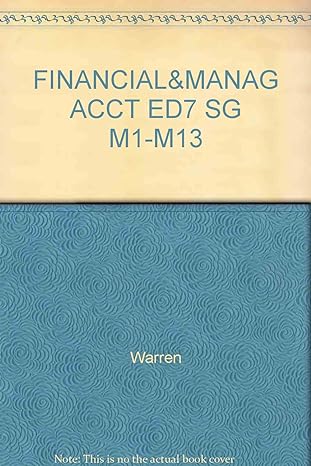Question
Select a non-financial public limited company listed in NSE. Company Background: Mention the sectors that the company operates in, main products/brand names, market share, geographies
Select a non-financial public limited company listed in NSE.
Company Background:
Mention the sectors that the company operates in, main products/brand names, market share, geographies of operations, new developments, main competitors, etc.
Which business segment and/or geographical segment - generates the most revenue? Is the most profitable, and employs the most capital and tangible assets?
Company Management:
Board Size and Composition is the board diverse enough with reference to Gender, Age, Educational Background, Experience, independence etc.? Has the company expanded its board size?
Compensation to directors as % of revenues and increase over last year.
How many Board meetings were held during the year?
Do these directors also hold directorships in other companies?
Does the entity comply with regulations wrt Independent Directors and Women Directors?
Non-Current Assets:
What is the total investment in non-current assets as % of total assets?
What is the composition of tangible & intangible assets?
Has the firm made additional investments in non-current assets? How does this compare with current revenues, profits, and operating cash flows?
Has it scrapped or sold any assets? what was the profit/loss in that case?
What is the policy for depreciation? Is it the same for all categories of assets?
What is the depreciation as % of total revenues?
Has the company revalued any of its fixed assets during the year?
Has the company recognised any impairment losses?
How much revenue is generated per rupee of investment in fixed assets?
What is the return on total assets, return on fixed assets?
What % of last years revenues, profits, and operating cash flows is invested in additional fixed assets?
Revenues and Income
What are the major sources of revenues and other income?
If revenue is generated from multiple business segments or geographical regions? What is the proportion of each segment/ region?
What is the growth in revenues?
What is the policy for revenue recognition?
Inventories
What type of inventories does the company hold?
What is the total investment in inventories? How does it compare with the previous year?
What is the policy adopted for inventory valuation?
Long-Term Borrowings:
What are the sources of long-term debt? Has the composition changed?
Are the borrowings in different currencies?
Which assets are offered as security against the borrowings?
What % of total assets in funded by long-term debt?
Did the company raise additional/repay existing long-term debt during the year?
What were the specific reasons for additional borrowings during the year?
What is the average cost of these borrowings?
What is the interest coverage ratio?
Are operating cash flows sufficient to meet interest and principal obligations?
Ratio Analysis:
Analyse the performance of the firm for the year ended March 2023 and 2022. Use appropriate ratios and other industry-specific metrics (as applicable).
Step by Step Solution
There are 3 Steps involved in it
Step: 1

Get Instant Access to Expert-Tailored Solutions
See step-by-step solutions with expert insights and AI powered tools for academic success
Step: 2

Step: 3

Ace Your Homework with AI
Get the answers you need in no time with our AI-driven, step-by-step assistance
Get Started


